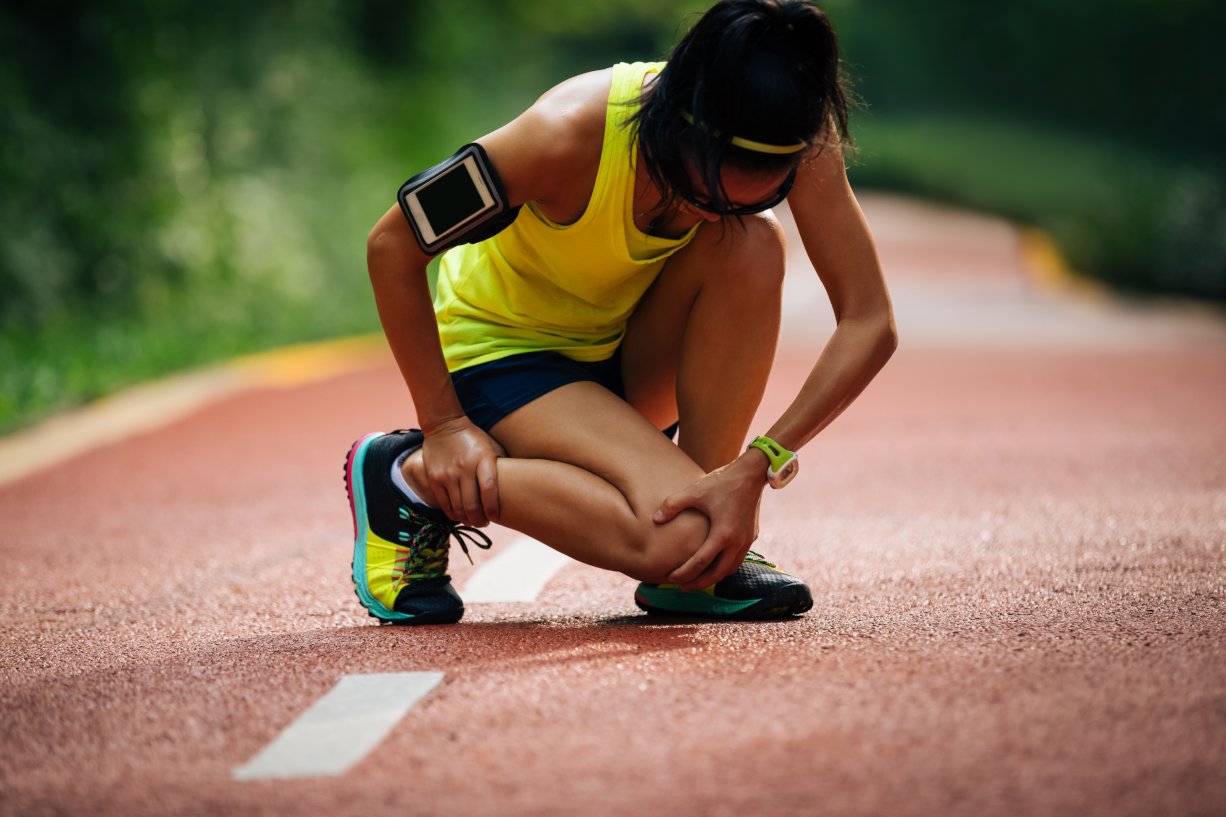Athletes regularly encounter a range of wounds and injuries, from minor scrapes and bruises to more serious issues like sprains, strains, and even fractures. How these injuries are managed can profoundly impact an athlete's performance, career, and overall well-being. Neglecting proper wound care can lead to unnecessary downtime, which is anathema to an athlete’s ambitions.
In this blog post, we delve into the world of "Wound care for athletes," unveiling its significance, strategies, and methods that can be employed to minimize downtime and maximize an athlete's potential. From understanding the essence of wound care in sports to exploring the tailored techniques and advanced healing methods, we aim to provide athletes and sports enthusiasts with the knowledge they need to stay in the game, literally and figuratively.
The world of sports is unforgiving, but with the right strategies for wound care, athletes can ensure that they spend less time on the sidelines and more time doing what they do best – achieving greatness in their chosen arena.
Common Wounds in Sports: Navigating the Terrain of Athletic Injuries
In sports, injuries are almost as ubiquitous as the thrill of victory. Athletes, both amateur and professional, face a range of common wounds, each presenting its challenges and potential disruptions to their performance. Understanding these injuries and their management is at the core of effective wound care for athletes.
Abrasions and Lacerations: Athletes often deal with skin injuries like abrasions (commonly referred to as "road rash") and lacerations, typically the result of falls, collisions, or sliding on various surfaces. These injuries can range from superficial scrapes to more significant cuts and gashes. Proper cleaning, disinfection, and dressing of these wounds are crucial to prevent infection and minimize downtime.
Sprains and Strains: Sprains and strains are common musculoskeletal injuries in sports, affecting ligaments and muscles, respectively. Sprains occur when ligaments are stretched or torn, while strains involve overstretching or tearing of muscles or tendons. Timely and effective management, including rest, ice, compression, and elevation (RICE), followed by physical therapy, is essential for athletes to recover quickly and safely.
Contusions (Bruises): Bruises, or contusions, are frequently encountered by athletes due to direct impacts or collisions. While they may not seem as severe as other injuries, they can still cause pain and discomfort. RICE therapy, gentle massage, and over-the-counter pain relief options can help minimize the healing time for bruises.
Fractures and Dislocations: These injuries are more severe and often require immediate medical attention. Fractures involve broken bones, while dislocations occur when the ends of two connected bones are forced out of their usual positions. Quick evaluation and proper treatment, which may include casting, splinting, or even surgery, are vital for athletes dealing with such injuries.
Overuse Injuries: Many athletes, especially those in endurance sports, are prone to overuse injuries like stress fractures, tendinitis, and bursitis. These conditions develop gradually from repetitive strain on a particular body area. Preventive measures, rest, and, in some cases, physical therapy are key elements of "Wound care for athletes" dealing with overuse injuries.
Tailored Strategies for Athletic Injury Recovery
Athletes demand specialized wound care that recognizes the unique nature of sports-related injuries and aims to get them back into action as quickly and safely as possible. Here, we delve into strategies tailored to the most common athletic injuries to minimize downtime and optimize the healing process.
Abrasions and Lacerations:
Prompt Cleaning and Dressing: Athletes should address abrasions and lacerations immediately. Cleaning the wound with mild soap and water or a saline solution is essential to prevent infection. Covering the injury with a sterile dressing can help keep it clean.
Keeping it Covered: While returning to sports, it's crucial to keep abrasions and lacerations covered with appropriate wound dressings or bandages. This not only protects the wound from further injury but also reduces the risk of contamination.
Stitching and Suturing: For deeper lacerations that require stitches or sutures, athletes should follow their healthcare provider's advice on wound care, including keeping the area dry and sterile and avoiding activities that could disrupt the healing process.
Sprains and Strains:
Immediate RICE Therapy: Rapid application of the RICE protocol—Rest, Ice, Compression, and Elevation—is vital for managing sprains and strains. These steps help reduce inflammation and pain in the affected area.
Physical Therapy: Athletes should consider physical therapy to regain strength and flexibility in the injured area. A trained physical therapist can provide exercises and guidance tailored to their sport and specific injury.
Gradual Return to Activity: Resuming sports activity should be gradual. Athletes must receive clearance from medical professionals before entering intense training or competition.
Contusions (Bruises):
Rest and Ice: Rest is key for allowing the body to heal bruised tissues. Applying ice in the first 24-48 hours can reduce swelling and minimize pain.
Gentle Massage: Gentle massage techniques, administered by a qualified therapist, can help improve blood circulation and speed up the healing process.
Pain Management: Over-the-counter pain relievers, as recommended by a healthcare provider, can assist in making recovery more comfortable.
Fractures and Dislocations:
Prompt Medical Attention: For fractures and dislocations, athletes should seek immediate medical attention to ensure the injury is correctly diagnosed and treated. Quick interventions can significantly reduce downtime.
Compliance with Treatment Plans: Athletes must diligently follow treatment plans, whether it involves casting, surgery, or physical therapy. Adhering to these plans is critical for proper healing.
Overuse Injuries:
Activity Modification: Overuse injuries often necessitate adjustments to an athlete's training regimen. Modifications may include reducing training intensity, cross-training, and using proper equipment.
Physical Therapy: A physical therapist can guide athletes in exercises to address overuse injuries. They can also provide education on body mechanics and techniques to prevent re-injury.
Nutrition and Hydration: Proper nutrition and hydration are essential for athletes recovering from overuse injuries. A balanced diet and adequate hydration support the body's natural healing processes.
Customized wound care for athletes can make a significant difference in the recovery process. By targeting specific types of athletic injuries with appropriate strategies and adhering to professional medical guidance, athletes can look forward to quicker rehabilitation and a swifter return to the sports they love. In the subsequent sections, we'll explore more advanced treatment options and emerging technologies that are transforming the field of sports injury recovery.
Advanced Approaches in Wound Care for Athletes
In sports and athletics, cutting-edge treatments and technologies have emerged, reshaping the landscape of "Wound care for athletes." These advanced approaches offer athletes more effective and efficient ways to heal and recover. Here, we explore some of these innovative methods that can help minimize downtime and optimize the recovery process:
Platelet-Rich Plasma (PRP) Therapy:
How It Works: PRP therapy involves drawing a small amount of the athlete's blood, which is then processed to concentrate the platelets. These platelets contain growth factors that can accelerate the healing process.
Application: PRP therapy can be used for sports-related injuries, including tendonitis, muscle strains, and ligament injuries. It can promote tissue regeneration and reduce inflammation, potentially shortening recovery times.
Professional Guidance: Athletes should seek professional guidance for PRP therapy. A trained healthcare provider can determine if it's a suitable treatment and administer the therapy correctly.
Hyperbaric Oxygen Therapy (HBOT):
How It Works: HBOT involves breathing pure oxygen in a pressurized chamber. This boosts oxygen levels in the bloodstream, promoting faster recovery by enhancing the body's natural healing processes.
Applications: HBOT has shown promise in treating various sports-related injuries, including muscle injuries and stress fractures. It can reduce inflammation and improve tissue healing.
Safety Precautions: Athletes considering HBOT should work with healthcare professionals who are experienced in this therapy to ensure safety and effectiveness.
Cryotherapy:
How It Works: Cryotherapy involves exposing the body to extremely cold temperatures for a short period. This cold exposure can reduce pain and inflammation, aiding recovery.
Applications: Cryotherapy can be used for muscle and joint injuries, particularly in cases where inflammation is a significant issue. It is also commonly used for recovery after intense training sessions.
Supervised Sessions: Athletes should undergo cryotherapy under the guidance of professionals who can ensure safety and effectiveness.
Shockwave Therapy:
How It Works: Shockwave therapy employs high-energy shockwaves to stimulate the body's natural healing processes. It can increase blood flow, promote tissue regeneration, and reduce pain.
Applications: This therapy is often used for tendon injuries, such as Achilles tendonitis, and conditions like plantar fasciitis. It offers a non-invasive approach to healing.
Consultation with Professionals: Athletes should consult with healthcare providers experienced in shockwave therapy to determine its suitability and receive appropriate treatment.
Telemedicine and Remote Monitoring:
How It Works: Advances in telemedicine have allowed athletes to consult with healthcare providers remotely. This technology allows for timely assessments, guidance on recovery, and monitoring of the healing process.
Applications: Telemedicine is particularly useful for minor injuries and follow-up appointments. It provides convenient access to healthcare professionals while minimizing travel and downtime.
Professional Guidance: Athletes should work with healthcare providers who offer telemedicine services, ensuring that the consultation is effective and comprehensive.
These advanced approaches in wound care for athletes reflect the evolving landscape of sports injury recovery. Athletes can now access treatments and technologies that not only enhance healing but also minimize downtime. However, it's crucial to approach these advanced methods with the guidance of experienced healthcare professionals to ensure their safety and effectiveness.
Conclusion
In the world of sports and athletics, time is a precious commodity. Wound care for athletes has evolved, offering innovative strategies to minimize downtime. From embracing preventative measures to leveraging cutting-edge therapies, athletes now have many options to heal faster and return stronger. With the guidance of experienced healthcare professionals and an eye on emerging trends, athletes can continue pushing boundaries while ensuring optimal recovery. The future of sports injury recovery looks promising, with advancements on the horizon that will further revolutionize the way athletes heal and excel.



.webp)

.avif)
